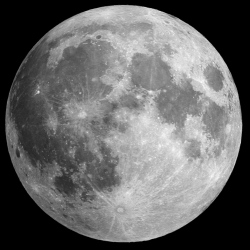
Japan is already starting to test the waters with automated construction. Members of its robotic workforce currently in action include remotely-controlled bulldozers, AI-assisted control systems and drones. Now the space agency JAXA is looking to take this technology to the undeveloped plains of the Moon and Mars.
Plans to build human shelters on extraterrestrial bodies had been bandied about long before the rise of modern robotics. In 1959, 10 years before we first set foot on the Moon, the US government conducted studies exploring the feasibility of creating a military moon base, while the Soviets had plans for a lunar outpost of their own at around the same time.
Fast forward half a century or so and a longing for the lunar lifestyle still lingers. Private architecture firms, the European Space Agency, the Russian Federal Space Agency and NASA have all put forward plans to build space bases of one kind or another. 3D printing technology has helped bring such visions into the realms of possibility, particularly when casting the eye further afield to a certain dusty red planet.
Last year, NASA’s Mars-focused 3D Printed Habitat Challenge offered up US$2.25 million in an effort to push along the 3D printing technology "needed to create sustainable housing solutions for Earth and beyond." The eventual winner, dubbed Ice House, would use Mars’ predicted abundance of sub-surface water ice to form a translucent and radiation-protective skin inside an inflatable membrane. Other ideas involve using loose soil and rocks to construct the first Moon and Martian habitats.
JAXA hasn’t revealed quite this much detail about exactly how structures would one day be erected, but it has teamed up with Japanese construction company Kajima to lay the groundwork for such a future. According to Nikkei Asian Review, the company’s automated construction systems should allow the agency to build habitats for four to six people on the Moon in around 2030 and on Mars in around 2040.
The company has already fitted connected bulldozers with a machine control program to carry out autonomous tasks, but doing this on Earth under the watchful eye of site supervisors is obviously quite different to unleashing them on another planet. So Kajima will seek to up the level of autonomy and safety by developing a new way for the machines to communicate with one another and work more efficiently.
Nikkei Asian Review reports that this might mean things like detecting their own locations and changing paths to avoid collisions, or not digging up the same hole over and over again. Kajima plans to use this autonomous machinery to carry out tasks like shifting dirt and leveling ground for rocket launch pads and other structures. If this can be achieved, the next step will be to further develop the technology to allow the autonomous construction of complex structures.
"If we succeed in building automated machinery, we can transfer the technology to engineering works on the ground," Satoru Miura, principal researcher at the Kajima Technical Research Institute, told Nikkei Asian Review.
JAXA will begin indoor experiments to further these technologies sometime after April 2017.
